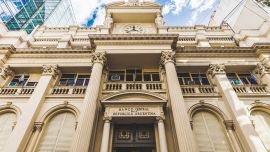The ex-ESMA Navy Mechanics School, the most notorious clandestine murder and torture centre among hundreds operated by Argentina's brutal 1976-1983 military dictatorship, stands today as a reminder of the brutality humans are capable of.
Inscribed Tuesday on the UNESCO list of World Heritage sites, the centre's four-letter acronym (Escuela Superior de Mecánica de la Armada) still manages to send a shudder down many spines.
The ex-ESMA is emblematic of the dark period in Argentina's history that left an estimated 30,000 people killed or forcibly disappeared, according to human rights groups. Of those, about 5,000 entered the site. Very few re-emerged.
Established in 1928 to instruct naval officers and sailors, it was the largest and most active detention, torture and extermination centre operated by former genocidal soldiers being tried by civil courts to this day.
Here, prisoners were tortured, beaten, raped, kept in chains for months on end, hooded – all in the hopes they would give up other people suspected of being "subversives."
Pregnant detainees had their babies taken and given to families with connections to the dictatorship. Several still don't know their true identities today.
And every week – generally on a Wednesday – detainees were rounded up for what they were told were "transfers" but were in fact so-called “death flights” during which prisoners were thrown out of planes over the Río de la Plata – both dead and alive.
Shackled, handcuffed and hooded, victims arrived at the building’s cellar first. For many, it was the last time they stepped on land before being taken away, disappeared and thrown to their death.
"The worst of the state terrorism of the last military dictatorship in Argentina was expressed there," President Alberto Fernandez said after the announcement from a UNESCO World Heritage Convention in Saudi Arabia. “Memory must be kept alive for poor experiences not to be repeated”.
The ex-ESMA today is officially a "Space for Memory and for the Promotion and Defense of Human Rights" – a reminder of a blemish on history that must never be repeated.
Photographs of hundreds of victims line the walls. Many were mere teens.
The horrors were centred on the last floor and the attic, called “Capucha” and “Capuchita,” sealed spaces where detainees, identified by numbers, were tortured to disclose the whereabouts of others who were persecuted. Women were harassed and raped there.
Former detainee Eduardo Giardino, on a visit to the museum he remembers as his personal hell from 32 years earlier, took a tour of "Capuchita" – the attic where he was held from 1978 to 1980 in an individual cage.
"I asked the museum guides to leave me alone in 'Capuchita'," said the 68-year-old. "I felt the need to lie down on the floor again, to relive it, but... as a free person."
Former soldiers attached to the ex-ESMA and other such centres are still being tried today for crimes they committed there: in total, 1,159 have been convicted to date and another 366 cases are still open.
The ex-ESMA is located in the middle of a vast park in Núñez, a peaceful suburb of the bustling capital.
From inside its walls, inmates remember hearing street noises, school bells ringing, and crowds clamouring at the Monumental Stadium which hosted the 1978 FIFA World Cup final between Argentina and the Netherlands. Normal life seemed so near yet so far away.
'It hurts'
"The building is a... witness" to what happened. "Going through it hurts but it is healthy, because it does not allow us to distort history," said Ricardo Coquet, a 70-year-old survivor of torture.
"Having survived at ESMA is luck. The important thing now is to.. bear witness," he told AFP.
The ex-ESMA's three-storey building was first opened as a training centre. An officers' mess – the ‘Officer’s Casino’ – that later doubled as the illegal detention centre and prison was constructed in 1948.
When the military grabbed power in 1976, the school became the centre of the military's most brutal operations against political and social activists or anyone suspected of a "subversive" allegiance – unaffiliated civilians, workers, athletes and members of religious orders.
Like in Dante’s Inferno, there were other circles. In a tiny room that had been stripped bare, dozens of women gave birth to their children before they were taken away from them and then they disappeared. Several children (11 out of 37 known cases from the ex-ESMA) have recuperated their true identities thanks to the Grandmothers of Plaza de Mayo.
In 1979, the IACHR Inter-American Commission on Human Rights visited the site. For two months, the soldiers emptied it and moved inmates to islands on the Paraná River delta. They soon went back to the same brutal routine.
Defeat in the South Atlantic War (1982) eventually put an end to the military regime. Democracy revealed the horrors of the ex-ESMA and some of the perpetrators, with interruptions, eventually stood trial for crimes against humanity.
The ex-ESMA continued to be run as a school until in 1998 president Carlos Menem, who pardoned former dictators and guerrilla fighters, ordered the demolition of the site to create a “monument for national reconciliation and unity."
Mothers and relatives of those who disappeared prevented it with appeals for protection of constitutional rights. It was declared a historical monument in 2004 and its spaces, today a "Museum of Memory," are intact and may be used as evidence in court.
And in 2004, Menem's successor Néstor Kirchner announced it would become a memorial museum.
Some 150,000 people visit the ESMA every year, tourists and students alike, and partake in activities for reflection and debate about what happened there.
In its submission to UNESCO for the ESMA to be declared a heritage site, the Argentine government argued it was a "symbol of the genocide" that took place in the country.
"It is incontrovertible proof of the State terrorism that inflicted extreme criminal violence on society at large," said the proposal.
“Having survived ESMA is lucky,” assures Coquet. “The important thing is to be a witness” and give a "full account" of the horrors" that took place there, he added.
by Eduardo De Miguel, AFP




















Comments